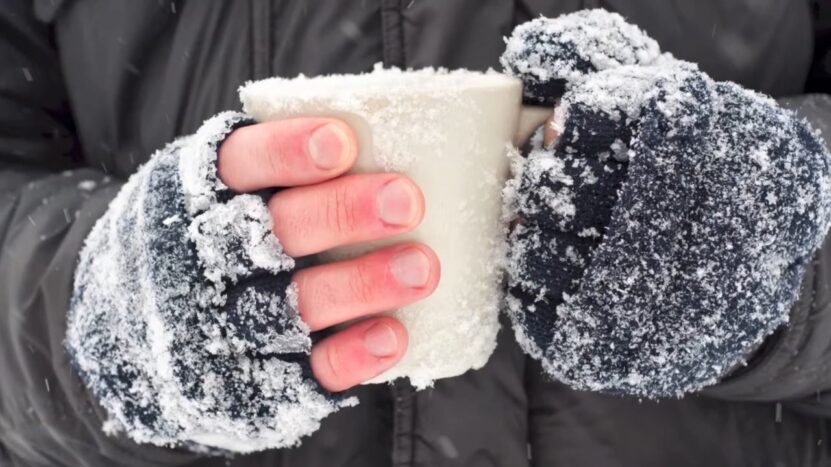In the chilly winter months or on adventurous forays into icy climates, frostbite is a real concern. It doesn’t just leave you with immediate pain and discomfort; it often results in scars that can be both physically and emotionally distressing.
But fret not because there are ways to diminish and even eliminate these lasting marks. This blog post talks about how frostbite scars develop and offers actionable advice on how to get rid of them.
The Basics
Let’s begin by understanding what we’re dealing with. Knowing how frostbite and scars occur can empower you to take effective steps for treatment and prevention.
What Is Frostbite?
Frostbite is a condition where the skin and underlying tissues freeze due to extremely low temperatures. It usually affects the fingers, toes, ears, nose, and cheeks. Severe frostbite can damage skin, tissues, muscles, and even bones. The condition can range from frostnip (a milder form) to deep frostbite, affecting multiple layers of skin and tissues.
How Do Scars Form?
Scarring is the body’s natural way of healing after an injury, including injuries from frostbite. When the skin is damaged, the body produces a protein called collagen to close the wound.
However, the newly formed skin will have a different texture and quality compared to the surrounding skin, leading to a scar. Scars can either be hypertrophic, staying within the boundary of the original wound, or keloid, which expands beyond the wound area.
Prevention First

As the saying goes, “Prevention is better than cure.” This principle applies to frostbite scars as well. Knowing how to avoid frostbite can save you from the ordeal of dealing with its long-term consequences.
Effective Measures
- Layer Up: Dress in layers to keep warm and insulated.
- Moisture-Wicking Fabrics: Use moisture-wicking fabrics to keep your skin dry.
- Cover Extremities: Make sure to cover your hands, feet, and face when exposed to cold temperatures.
- Stay Dry: Wet skin is more susceptible to frostbite.
- Limit Exposure: Limit the time you spend in extreme cold.
Why Prevention is Crucial
Preventing frostbite not only spares you from immediate pain but also saves you from potential long-term scarring. Furthermore, severe frostbite can result in tissue death (gangrene), which might require surgical removal and result in permanent scars. Therefore, it’s better to prevent frostbite than to manage its aftermath.
Treatment Options for Frostbite Scars
So, you’ve got a frostbite scar, and you’re wondering how to get rid of it. Here’s your arsenal of treatments, ranging from creams to more intense medical procedures.
Topical Treatments
Topical treatments, such as creams and ointments, are often the first step in scar treatment. Silicone gel sheets or Vitamin E ointments can help in reducing scar tissue. Products with active ingredients like hydroquinone can help in lightening the scar.
Medical Procedures
If topical treatments aren’t effective, your next options are medical procedures. These are more invasive and expensive but often yield faster results.
- Laser Therapy: Helps in reducing scar tissue and improving skin texture.
- Microneedling: Stimulates collagen production to improve the skin’s appearance.
- Surgical Removal: In extreme cases, surgical removal of the scar might be considered.
Natural Remedies
There are also natural remedies that can help diminish scars, although their effectiveness isn’t guaranteed.
- Aloe Vera: Known for its healing properties.
- Onion Extract: Available in gel form and is thought to improve scar appearance.
- Coconut Oil: High in Vitamin E, which can aid in scar healing.
Follow these steps if you have skin discoloration due to frostbite or frostnip.
The Importance of Professional Consultation

While the Internet is brimming with advice and recommendations, nothing replaces professional medical advice. Here’s why it’s crucial to consult experts for treating frostbite scars.
When to See a Doctor
If you have tried topical treatments or natural remedies without noticeable improvement, it’s time to see a doctor. A healthcare professional can assess the scar’s severity and recommend treatments that could be more effective for your condition.
Following Expert Advice
Your physician may recommend tests or imaging studies to evaluate the scar tissue’s extent. They might also provide a referral to a dermatologist or plastic surgeon for specialized treatment. Remember, each case is unique, so personalized medical advice is invaluable.
The Role of Diet and Lifestyle in Scar Healing
Often overlooked, your diet and lifestyle choices play a significant role in the healing process. Let’s explore how you can bolster your healing from the inside out.
Nutritional Considerations
A balanced diet rich in essential nutrients can help accelerate the healing process. Certain vitamins and minerals directly affect skin health.
- Vitamin C: Helps in the synthesis of collagen, a vital protein for skin healing.
- Zinc: Necessary for cell division and tissue growth, which can help in faster wound healing.
- Protein: A key component for cellular repair.
Hydration and Exercise
Believe it or not, simple things like staying hydrated and engaging in regular exercise can influence scar healing.
- Hydration: Water is essential for every cellular process, including skin repair.
- Exercise: Increases blood flow, aiding in the delivery of nutrients and oxygen to healing tissues.
Avoid Harmful Substances
- Smoking: Negatively affects blood circulation, which can hinder healing.
- Excessive Alcohol: Can interfere with the body’s healing mechanisms.
- Caffeine: Diuretic effects can lead to dehydration.
Psychological Aspects of Scarring
Scars can impact more than just physical appearance; they can also have psychological effects that shouldn’t be ignored.
Emotional Impact
A visible scar can affect self-esteem and body image, potentially leading to emotional distress or even depression. Recognizing the emotional impact is the first step in addressing it.
Coping Mechanisms
- Talk About It: Don’t underestimate the healing power of talking openly about your emotional struggles with trusted family and friends or a professional.
- Positive Visualization: Mindfulness and visualization techniques can help you accept the scar as a part of you rather than a blemish.
Seeking Professional Help
For those significantly affected by the emotional consequences of scarring, it may be beneficial to seek psychological counseling. Cognitive-behavioral therapy (CBT) is one approach that has been effective in treating issues related to body image.
Long-Term Maintenance and Care
Your journey doesn’t end once the scar starts to fade. Long-term care is essential to prevent recurrence and to maintain healthy skin.
Sun Protection
UV rays can darken scars, making them more noticeable. Always apply a high-SPF sunscreen on the affected area before heading out.
Regular Monitoring
Keep an eye on the scar’s appearance. If you notice any changes in size, color, or texture, consult a healthcare provider for a re-evaluation.
Continued Topical Treatment
Even after noticeable improvement, continue using prescribed or recommended topical treatments as advised by healthcare professionals to maintain the results.
FAQs
Who is most at risk for developing frostbite?
The body’s extremities, such as the ears, nose, fingers, toes, arms, and legs, are most susceptible to frostbite.
What are the long-term effects of frostbite?
Long-term effects can include sensitivity to colds, sleep problems, general weakness, chronic pain, arthritis, skin swelling, ongoing infections, and permanent scarring.
Can frostbite lead to skin cancer?
Yes, there is a risk of skin cancer where frostbite occurs, especially in severe cases.
How is first-degree frostbite different from more severe cases?
First-degree frostbite usually doesn’t result in permanent scarring if treated promptly. However, more severe cases can lead to permanent scars even with initial treatment.
Should I consult a doctor for frostbite scars?
Yes, consult a doctor to evaluate the scars and determine if they are at risk of turning into cancerous tumors. Early detection and treatment are crucial.
How are frostbite scars treated?
They require specialized treatment because they also damage underlying skin tissue. Treatment options may include laser treatments, chemical peels, or prescription bleaching products.
Are there any natural remedies for treating frostbite scars?
Yes, eating green vegetables rich in Vitamin C can help reduce scarring. Topical creams can prevent it from worsening, and moisturizers can promote long-term healing.
Can makeup be used to conceal frostbite scars?
Both men and women can use concealing makeup to hide scars on parts of the body not covered by clothing.
What are some preventive measures for frostbite?
Wearing proper gear to insulate against extreme cold and avoiding prolonged exposure to low temperatures can help prevent frostbite.
Final Words
There you have it—a comprehensive guide to understanding and treating frostbite scars. Prevention is your first line of defense, but if you find yourself with a lingering mark, know that various treatments can help you regain unblemished skin.
Always consult a healthcare professional for an accurate diagnosis and treatment plan tailored to your specific needs. Remember, you don’t have to live with the physical reminder of a frosty encounter. Effective solutions are available, and a scar-free future is within reach.
